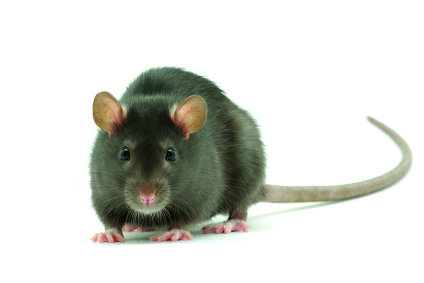We can help you keep your Albury home or business rat-free through our proven rat control treatments.
In conducting rat treatment, our technicians utilise their in-the-field experience, know-how, and latest technologies to determine where the rats are entering the building. We also locate where they are nesting, and develop a custom strategy of treatment.
Ask your local Jim’s Termite and Pest Control technician how to get rid of rats in Albury today on 131 546.
The rat control treatments we use may include humane trapping or loose baits thrown throughout the roof void. We may also use a rodent contract encompassing a baiting system situated around the property, as well as within roof voids and subfloors.
The rodent contract systems are designed to be pet and child friendly, achieved through the baits being encased within sturdy plastic stations, allowing only the targeted rodents access to the baits.

Rat Control – Types of Rats
Rats are serious pests upon humans and the management options are many. Certain rat species have over time established themselves as extremely frustrating pests to deal with.
Of these pests, the two most common rats within Australia include:
The Norway Rat
Characterised by features including a blunt nose, small eyes, small ears, body heavy set and a tail that is shorter than the head. This species is extremely widespread and possibly the most economically detrimental pest rodent in all of Australia.
The Roof Rat
Characterised by features including large eyes, large ears, body that is light and slender, and a tail that is longer than the rest of the body and head. This species is less widespread and less economically detrimental, however still pose significant threat particularly to boats and ships as they seldom venture outside.
Both species are well adapted to nesting and residing in very close contact with humans, sharing their food and shelter.
Rats continue to pose serious threats to health through contamination of food and spreading of illnesses, with many countries having legislature in place aiming at reducing the levels of infestation.
Our pest controllers expend significant energy every year in trying to control and minimize these cunning and extremely cautious pests which continue to successfully exploit urban environments.

Rat Detection
Any attempt to control rats in buildings must, of necessity begin with a thorough inspection of the premises.
When inspecting a property our technicians look for an array of signs that may indicate their presence in various areas throughout the property, these signs include:
Droppings
Aid in identifying the species of rodent, the size of the rodent, and how recent they were in the vicinity.
Runways and Rub-marks
These are greasy smear marks usually encompassing fur as well, indicating continual contact with such area. These are useful in determining placement of traps and bait.
Burrows
Often found near waterways and buildings. Rat burrows consist of a hole hidden under debris. Further useful in trap and bait station placement.
Gnawing
Rats like most rodents must gnaw to keep their incisors (teeth) at a certain length. They will often gnaw on a wide array of materials, including woodwork, metals, food containers, cables and conduit. These gnawing marks are a clear sign of rat activity.
Nests
Often made of paper, roofing insulation, rags or paper. Often food and droppings will be present, particularly snail shells. Such nesting indicates a clear sign of activity, and useful in determining placement of traps and bait.
Tracks
Footprints and tail marks in dust covered floors and roof voids indicate rodent activity.
Sounds
Residents or occupants may hear sounds during the evening and night. Often described as squeaking, squealing, scurrying, gnawing, and sometimes fighting.
Rat Control Measures
A large variation of measures can be taken to control rat infestations. For example, a technician may, depending on the circumstances, suggest the usage of the following:
Rodent-Proofing
Altering the environment by introducing rat-proof coverings throughout voids and over holes or damage to the building, so that rats cannot gain entry to the building.
Trapping
Using bait to lure rats into traps, to physically capture the rat humanely, and later set free. Other traps include glue boards and snap traps to eradicate the rat permanently.
Chemical Control
The most common procedure. A technician may apply poisonous baits utilising anticoagulant rodenticides. These take time to take effect ensuring widespread termination of the infestation. A a technician may also choose to utilise tracking powders (poisonous dusts) and gels to ensure extermination.
Often a leading cause of rat infestation is due to poor sanitation. Decreasing the food and shelter available to a given population of rats is likely to lead to lower levels of food for them. Also, this will ultimately leading to competition between those present, which will eventually lead to a decline in the numbers present.
This aspect of rat control often involves a largely educational and advisory form of treatment conversed to the client. Such a treatment will, with reference to government health regulations, advise a client on precautions needed to be made including the secure storage of food and increased cleanliness both in and outside the building.
Outside the building, this may include the disbandment, redesign, or increased monitoring of chicken coups, as they are conducive to attracting rats and mice.
